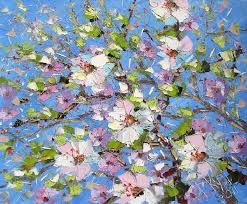oxygen
VITEBSK ART SCHOOL (part 3)
 The circle of sources covering this time in the biography of the master is mainly identified and studied, therefore all sorts of new information and facts are so rare and valuable. Vitebsk teacher Valentin Karlovich Seilert in the late 1910s visited Pan, and in 1920-1922. studied in Witsvomas with K. Malevich. In his memoirs, he cites an interesting episode dating back to 1919. “Once I once came to Yuri Moiseevich. He had none of his students at that time. I went straight to him in his personal little workshop. I went there, and there they sat on the sofa, Yuri Moiseevich sat, and there was Chagall. Chagall in the corner near the window set his canvas. And then they sat, therefore, and discussed, because Chagall listened to Pan’s opinion, just like a diligent student, with respect to his teacher. But despite this, he, of course, continued his line of behavior. Continue reading
The circle of sources covering this time in the biography of the master is mainly identified and studied, therefore all sorts of new information and facts are so rare and valuable. Vitebsk teacher Valentin Karlovich Seilert in the late 1910s visited Pan, and in 1920-1922. studied in Witsvomas with K. Malevich. In his memoirs, he cites an interesting episode dating back to 1919. “Once I once came to Yuri Moiseevich. He had none of his students at that time. I went straight to him in his personal little workshop. I went there, and there they sat on the sofa, Yuri Moiseevich sat, and there was Chagall. Chagall in the corner near the window set his canvas. And then they sat, therefore, and discussed, because Chagall listened to Pan’s opinion, just like a diligent student, with respect to his teacher. But despite this, he, of course, continued his line of behavior. Continue reading
PRINT. CLASSIFICATION AND VARIETIES (part 2)
 Lavis (from Fr. lavis – wash) – a kind of aquatint. Known since the 1780s. The drawing is applied by needle etching. The tonality is obtained by etching with acid, which is applied to the board with a brush. The boundaries of the tone spot are sharply defined. The print of Lavis resembles a work executed in watercolor. Lavis is very close to aquatint in terms of its external visual characteristics, but differs from it in watercolors of a tone spot, softness and fuzziness of outlines. Like aquatint, Lavis is used in combination with other etchings, for example, with a dry needle. The technique allows you to get no more than 30 quality prints from one board.
Lavis (from Fr. lavis – wash) – a kind of aquatint. Known since the 1780s. The drawing is applied by needle etching. The tonality is obtained by etching with acid, which is applied to the board with a brush. The boundaries of the tone spot are sharply defined. The print of Lavis resembles a work executed in watercolor. Lavis is very close to aquatint in terms of its external visual characteristics, but differs from it in watercolors of a tone spot, softness and fuzziness of outlines. Like aquatint, Lavis is used in combination with other etchings, for example, with a dry needle. The technique allows you to get no more than 30 quality prints from one board.
Zuev Alexey. Lada. Molodetsky Kurgan – Reservazh Reservazh (from French réservage) is a type of etching. The reserve first appeared in France in the second half of the 19th century. Continue reading
OIL ART PAINTS (part 2)
 You probably noticed that the colors on the palette soon stop getting dirty, but if you slightly press on them with your finger, you can make sure that they are soft. Inside the paint almost did not change its density, and hardened only on top. This feature of drying an oil binder has been known since ancient times. Artists sought to achieve a more uniform drying, as well as colorless films, get rid of the harmful substances contained in oils. To do this, they were washed with water, frozen, boiled.
You probably noticed that the colors on the palette soon stop getting dirty, but if you slightly press on them with your finger, you can make sure that they are soft. Inside the paint almost did not change its density, and hardened only on top. This feature of drying an oil binder has been known since ancient times. Artists sought to achieve a more uniform drying, as well as colorless films, get rid of the harmful substances contained in oils. To do this, they were washed with water, frozen, boiled.
There are many ways to process oil. Here is the simplest and, according to many artists, a good way to get condensed oil: it is exposed to the sun in an unclogged bottle of white glass Continue reading



